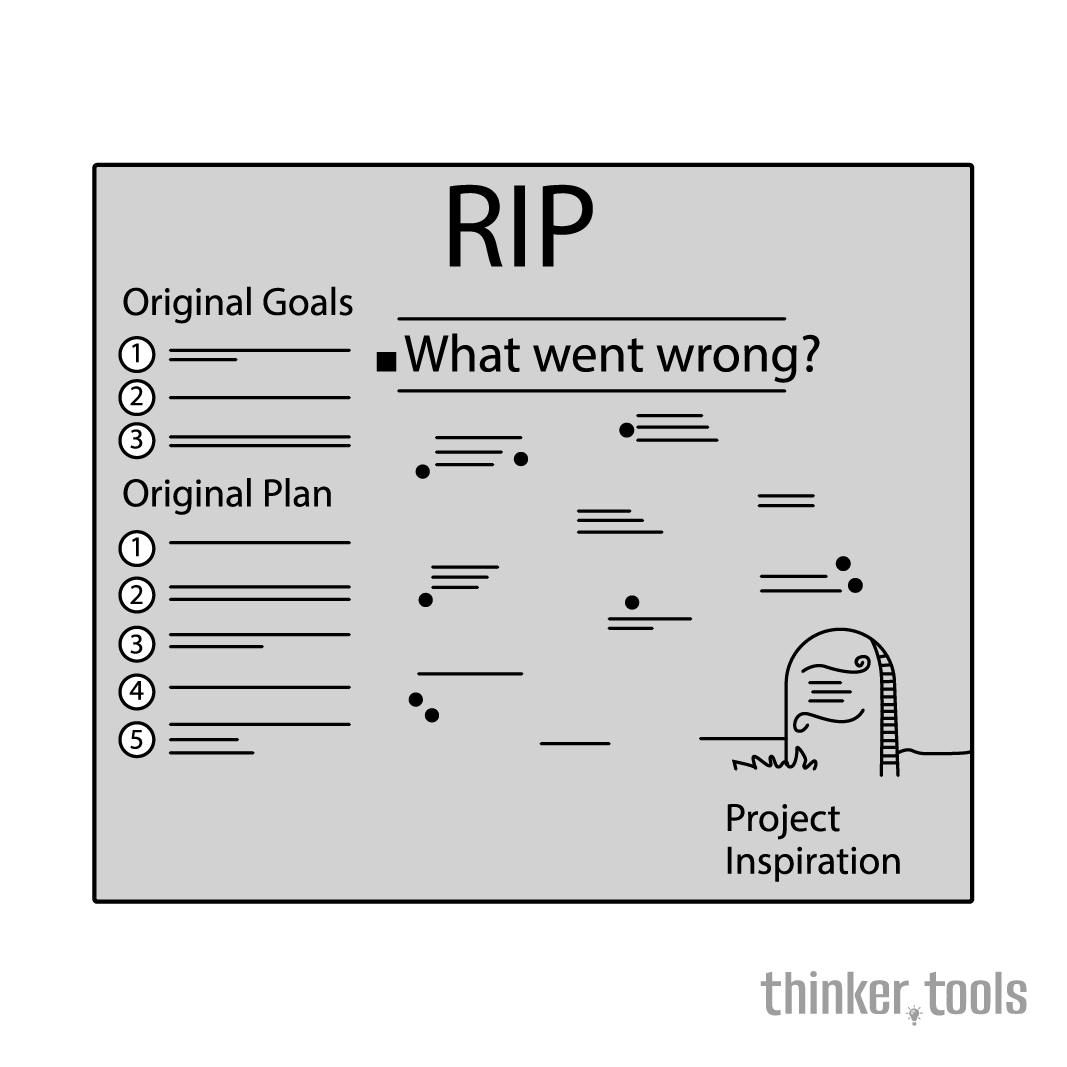
What is a Pre-Mortem?
A Pre-Mortem is a managerial strategy in which a project team imagines that a project or organization has failed, and then works backward to determine what potentially could lead to the failure of the project or organization. The technique requires team members to use prospective hindsight—imagining they're in the future looking back at a failure—to identify potential problems while there's still time to prevent them.
History and Origin
The Pre-Mortem technique was developed and popularized by psychologist Gary Klein, who first wrote about it in the Harvard Business Review in 2007. Klein's research in decision-making and cognitive psychology led him to discover that prospective hindsight—imagining that an event has already occurred—increases the ability to correctly identify reasons for future outcomes by 30%. This insight formed the foundation of the Pre-Mortem methodology, which has since been adopted by organizations ranging from startups to Fortune 500 companies.
How to Use the Pre-Mortem: Step by Step
Step 1: Set the Stage
Gather your team when the project plan is nearly complete but before execution begins. Ensure all key stakeholders are present. Create a safe, blame-free environment where people feel comfortable sharing concerns.
Step 2: Present the Scenario
The facilitator announces: "Imagine we are X months/years in the future. Our project has failed spectacularly. It's been a complete disaster." Be dramatic—the more vivid the failure scenario, the more effective the exercise.
Step 3: Individual Brainstorming
Give each team member 5-10 minutes to privately write down every reason they can think of for the failure. Encourage wild ideas and worst-case scenarios. The goal is quantity over quality at this stage.
Step 4: Collect and Share Reasons
Go around the room and have each person share one reason from their list. Continue until all unique reasons have been captured. Write each on a whiteboard or shared document visible to all.
Step 5: Consolidate and Categorize
Group similar failure reasons together. Common categories include:
- Technical failures
- Team and communication issues
- External factors
- Resource constraints
- Timeline problems
- Stakeholder issues
Step 6: Prioritize Risks
Have the team vote on which failure modes are most likely or would have the greatest impact. Focus on the top 5-10 risks that are both probable and consequential.
Step 7: Develop Preventive Actions
For each high-priority risk, brainstorm specific actions to prevent or mitigate the risk. Assign owners and deadlines for each preventive action.
Step 8: Update Project Plan
Incorporate the preventive actions into your project plan. Build in checkpoints to monitor identified risks throughout the project lifecycle.
Practical Examples
Software Product Launch Example: A team preparing to launch a new app conducted a pre-mortem and identified these potential failures:
- Servers crash on launch day due to unexpected traffic
- Key features have critical bugs users discover immediately
- Marketing message doesn't resonate with target audience
- Competitor launches similar product one week before
Preventive actions taken:
- Implemented auto-scaling and load testing
- Extended beta testing period by two weeks
- Conducted additional user research on messaging
- Accelerated launch timeline by one month
Wedding Planning Example: A couple used pre-mortem thinking for their wedding:
- Imagined failures: Caterer cancels last minute, rain ruins outdoor ceremony, key family members can't attend
- Preventive actions: Secured backup caterer, rented a tent, livestreamed ceremony for remote guests
Career Change Example: An individual considering a career pivot conducted a personal pre-mortem:
- Imagined failures: New skills take longer to develop than expected, networking doesn't yield opportunities, financial runway depletes
- Preventive actions: Started learning while still employed, joined professional associations early, increased emergency fund
Benefits and Life Improvements
The Pre-Mortem technique offers profound benefits for both professional and personal decision-making:
Overcomes Optimism Bias: Humans naturally tend toward optimism when planning. The Pre-Mortem creates a safe space for pessimism, surfacing concerns that might otherwise go unvoiced.
Improves Team Communication: Team members often hesitate to raise concerns about a plan everyone seems excited about. The Pre-Mortem legitimizes and encourages the expression of doubts.
Reduces Blind Spots: By forcing different perspectives, the technique reveals risks that no single person might have identified alone.
Increases Project Success Rates: Research shows that projects using Pre-Mortems have significantly higher success rates due to better risk identification and mitigation.
Builds Confidence: Paradoxically, imagining failure increases confidence because teams know they've prepared for worst-case scenarios.
Enhances Learning: The exercise improves team members' ability to spot risks in future projects, building organizational wisdom over time.
Personal Life Applications: Use Pre-Mortems for major life decisions like buying a home, starting a business, or planning retirement. The technique helps identify potential pitfalls while you can still avoid them.
The Pre-Mortem transforms the ancient wisdom of "hope for the best, prepare for the worst" into a structured, actionable process. By temporarily adopting a pessimistic view, teams and individuals can identify and address weaknesses in their plans, ultimately increasing their chances of success. Whether you're launching a startup, planning a wedding, or making a career change, the Pre-Mortem technique helps you navigate uncertainty with greater confidence and preparation. The small investment of time in imagining failure can yield enormous dividends in achieving success.